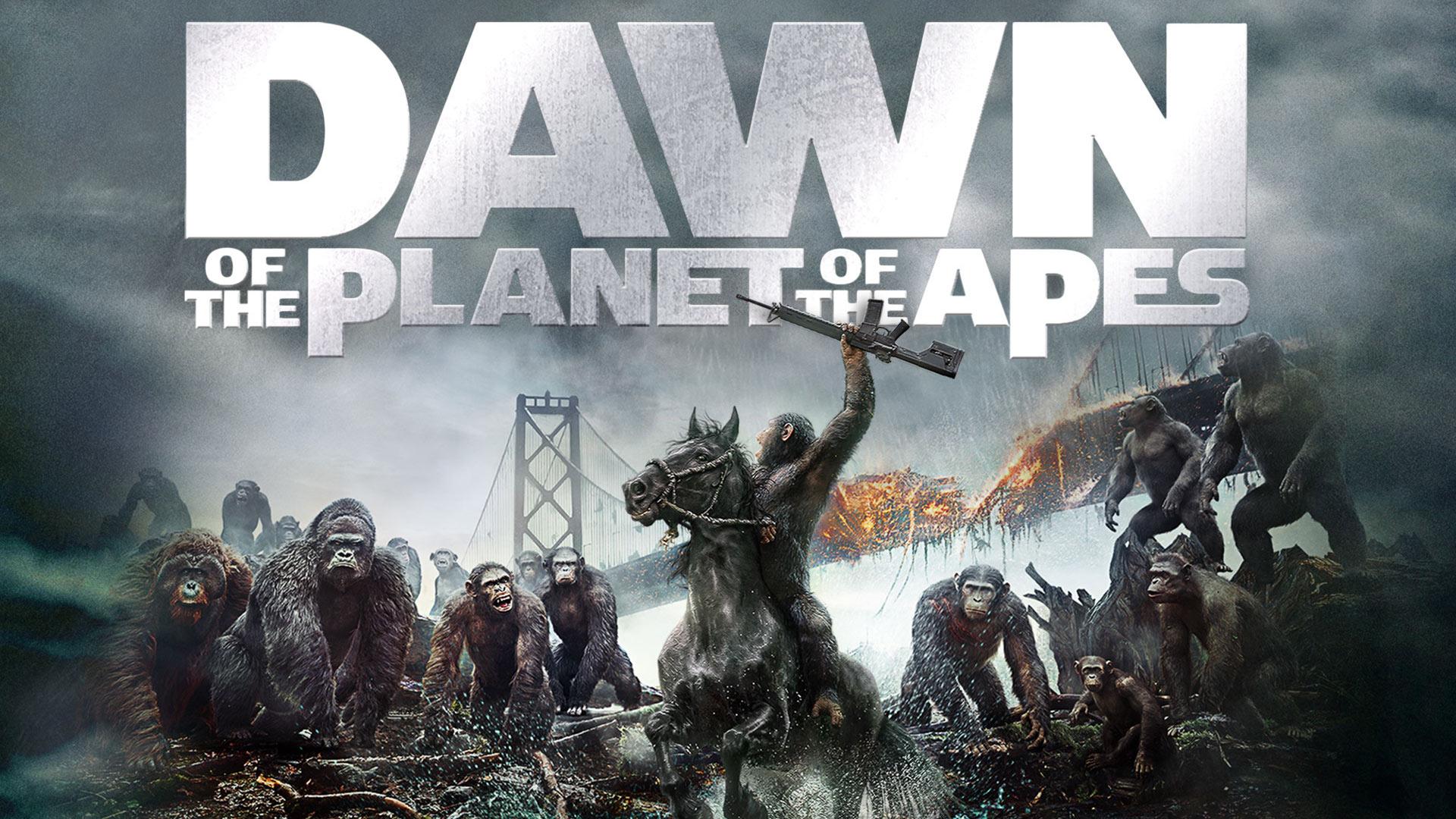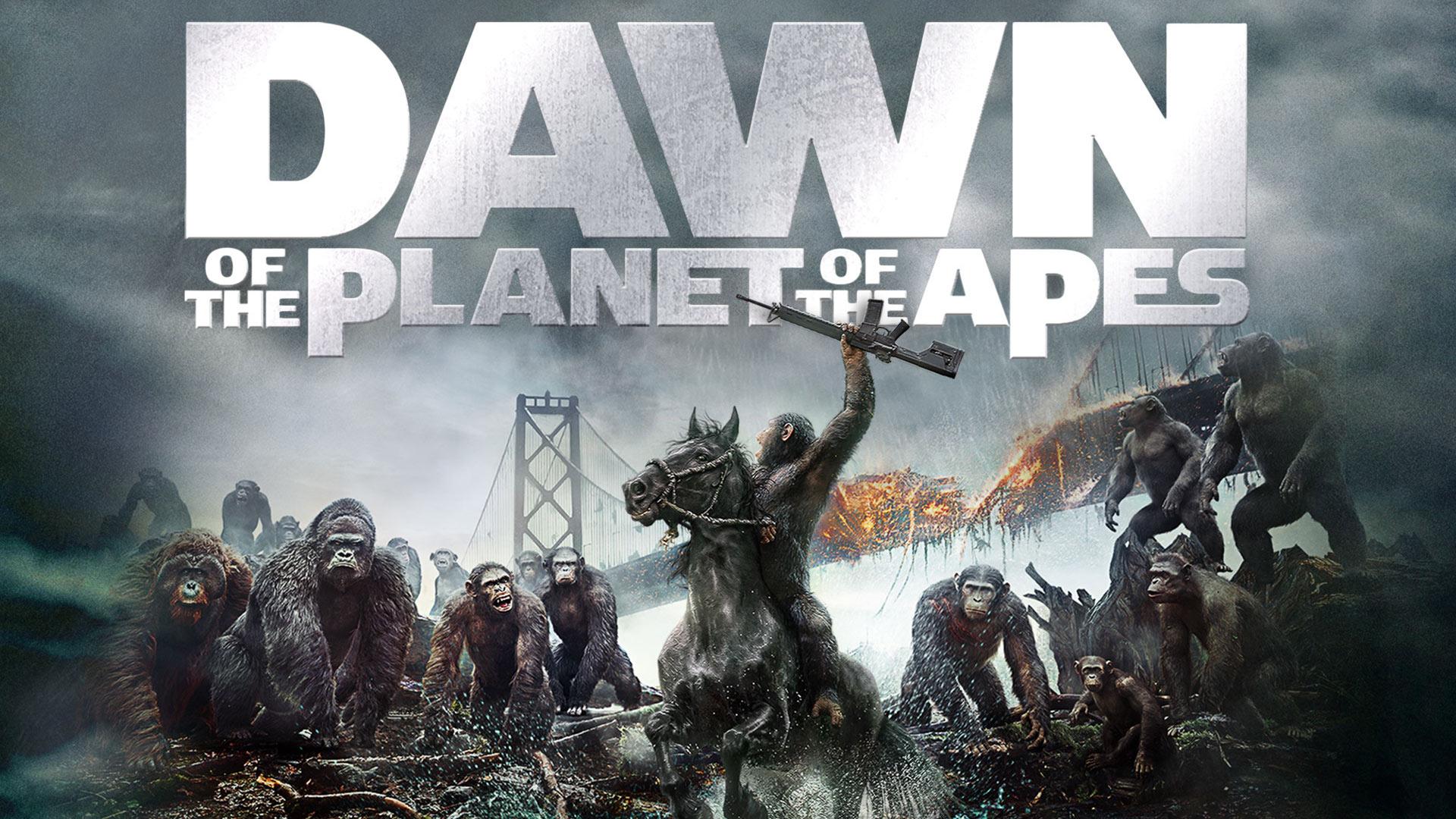“Dawn of the Planet of the Apes” is powerful, intelligent, and encapsulates all the themes of the movie with vigor, and it elicits an exceptionally sharp aftertaste. It parallels its predecessor, 2011’s “Rise of the Planet of the Apes” in that it draws scenarios and visuals from the 1960s and ‘70s “Apes” films and reconstructs them into epic dramas. These new additions to the franchise are not as satirical as the original “Apes” movies, but they’re still just as politically charged; the biggest difference is the intimacy. The politics are intimate, and they unfold through the character of Caesar (Andy Serkis).
In “Rise”, Caesar is depicted as a defiant victim, and rebel. His backstory interlaces the title character of Flowers for Algernon, a tale of a simple man implanted with extraordinary intelligence by a scientist by the name of Spofand, with Spartacus. There were political elements in the script, mainly having to do with the ethics of animal testing. But mostly “Rise” was a traditional hero’s journey. An ordinary ape realizing his astounding potential to become, pun very much intended, a guerilla warrior who would galvanize his brethren to emancipate themselves from human tyranny and establish a sanctuary in the Northern California forest.
Because the film ''Rise'' focused on the development of strong emotions, which were often rooted in Caesar's character, the film turned out to be particularly intimate and distressing. You entered the tale through Caesar; he was your gateway. Just as you rooted for King Kong, Frankenstein’s monster, and Dumbo, you were able to fully sympathize with Caesar. We can all agree that you suffered alongside him and rejoiced when he fought for his rights.
The predominantly splendid “Dawn” adds complexity to Caesar’s tale by depicting the aftermath of a revolt, when the glamour of uprising has disappeared and monotonous reality sets in. Along with his fellow apes, Caesar is living in the forest where the remnants of civilization, devastated by the simian flu, lies in ruins. A small group led by Gary Oldman, Jason Clarke, and Keri Russell approaches. These humans request Caesar’s permission to reactivate the dormant hydroelectric power plant located in the woods so they can restore power to their San Francisco settlement. San Francisco is home to a few hundred plague survivors who live in stone-age squalor. The humans claim their motives are purely peaceful and harmless. Their request is the source of great torment for Caesar, and it is what sets the plot into motion.
Some critics have pointed out the underlying message of “Dawn of the Planet of the Apes” being the Israel-Palestinean conflict. Granted, some remnants of that real tragedy do exist; however, for me, most of the allusions were much broader, suggesting the outline of a fable meant to instigate and ultimately guide one towards wisdom.
We can trace elements back to the Cain and Abel stories from the Old Testament, and later western films that showcased the clash between settlers and Native Americans. These groups went through a lot of conflict, which is the case in the stories of today. The rise of the planet of the apes has canonized Caesar as their “freedom” ruler, who is later recognized as the Castro or Geronimo of ape self-rule. Ironically, he is more compassionate than most of his kind because of his adopted father figure. James Franco’s character who appears in the movie, “Rise”, claims to love him deeply. To add to this, he is quite reluctant to violence because his wife cannot heal without human aid.

This state of mind of Caesar symbolizes the internal struggle a family of sentient mammals seeking global control battle with. Man reflects an ape in these movies, while the opposite is true. There is a somewhat ridiculous, yet effective move in silent film editing that creates parallels between people who have a conflict resolution approach and those who take on a decidedly confrontational one.
Caesar confronts these inner contradictions within himself at the same time they are personified in his ape counterpart, Koba (Toby Kebbell), a bitter, battle-scarred, psychologically tortured ex-laboratory specimen who once admired Caesar, but now believes that Caesar is overly passive and a dangerously close to George’s defining species betrayal. Their struggling relationship is reflected in the conflict of Clarke’s Malcolm (human Caesar) and Oldman’s Dreyfus (who at first seems reasonable but reveals himself as Koba’s counterpart).
The direction from Matt Reeves’s Let Me In—remaking the soulful vampire film—and the half-magnificent, half-lame found footage monster flick “Cloverfield“—evokes an early Spielberg feel, alternating humor with terror driven by the plot and motivated by directorial flourishes, including a Children of Men ‘ feat: an ape-infested warehouse and a hair-raising ride atop the turret of a tank). The credit goes for the script to Mark Bomback, Rick Jaffa, and Amanda Silver, whose mixed allegory is perhaps purposefully so. Though many claimed it had an over the top, editorial gun control attitude, that does not seem to be the case with center page modern and off. It suffers major flaws such as a too typical summer movie claw: things crashing into each other, lack of depth among human characters, and a dire shortage of women (biologically defensible on the ape’s side of the story, but surely not on the human side). But the overriding issue is lack of balance when it comes to characters.
The audience empathizes with Caesar and Koba’s, Malcolm’s, and Dreyfus’s perspectives to the extent where they understand the level of destruction each character is capable of. It can be noted that the resolution of every conflict within the ‘‘man/ape’’ duel is centered around the unresolvable conflict of differentiating who “started it” in the first place.

In light of everything that has been stated above, one cannot possibly argue that the combination of Serkis’s and the special effects creators’ performances in Rise could plunge the viewers deeper into the heart of the character itself. Though, somehow, it does succeed. In today’s film industry, a lionized figure of screen acting is Andy Serkis. To understand his impact, simply note that Chaney, sr. of first 20th century era was to cinema. The father of horror films, Chaney, would mutilate his appearance using painful make-up, while, in this case, CGI experts Serkis would be having their face truly deformed... but one thing still remains accurate, it’s not just about decimated faces, it’s about artistic vision. In this situation too, critiques would be racially inaccurate if they attribute visage of dominion devoid of flesh of his skin, serpent to dominator, king upon which desert he calls his domain. What would really make an impact lie down under choices made which appeal to being unlike ones behind the digital illusion. If you ask me, I would tell you that body language implies that Mifune has his portrait on the back of casted 60s samurai movie dubbed the glaring 1960s killed off myriad samurai films sarcasm And while he wish, as a performer, he could embody the character that in a colder light hints forces of envelop you narrator.”
The CGI mask on Serkis is a type of mask and so is Caesar's strategic self-portrayal. (Koba exhibits a similar facade in the some of the scenes where he is shown doing an ape ‘shuck and jive’ to trick dull humans.)
“Dawn” depicts Caesar struggling with the nagging pains of leadership. During some volatile and violently building moments, some of which are so ugly in the manner of a midnight movie, its pop-operatic audacity, and orange-brown torch-light garnish the queer regions of Michael Giacchino’s score (like a dying circus in hell) suggesting that it is the simian version of Francis Ford Coppola’s mafia trilogy. If “Rise,” which tells the tale of the unlikely hero of an endangered clan, was “The Apefather,” then sprawling, chaotic, messy and often sad sequel is “The Apefather, Part II,” where the conflict shifts to brothers fighting each other (on both sides of the human-ape dramatic divide) in a clash for land and resources. The film begins and ends with a montage of cross-cut closeups that serve as framing devices. The initial one fosters a gentle and nurturing promise of tomorrow, while the final one certifies that the tribe’s survival comes at a steep price—the loss of its essence. The burden rests heavy upon the furry head that wears the crown.
Planet of the Apes 2001 Review
Rise of the Planet of the Apes 2011 Review


